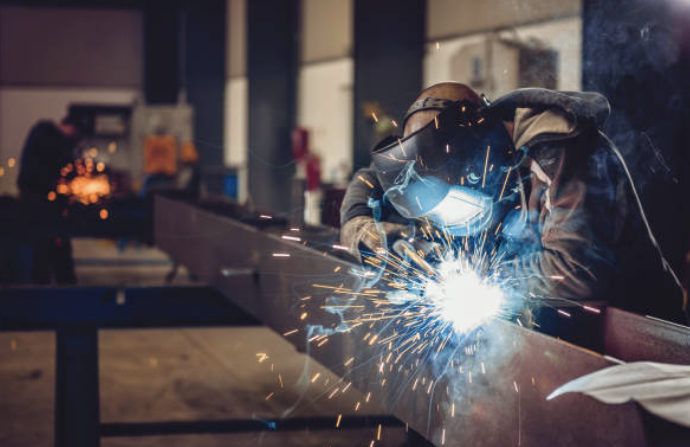
Posted on Monday, November 25, 2024
Welding equipment includes machines and tools used to join two or more pieces of metal by heating, melting, and fusing them. It encompasses welders, torches, electrodes, and safety gear.
Common types include MIG welders, TIG welders, stick (arc) welders, plasma cutters, and oxy-acetylene torches. Each is suited for specific applications.
MIG (Metal Inert Gas) welding uses a wire feed to join metals, making it ideal for faster, thicker welds. TIG (Tungsten Inert Gas) welding uses a non-consumable tungsten electrode for precise and clean welds, suitable for thinner metals.
MIG welders are often recommended for beginners due to their ease of use, speed, and versatility.
Consider factors such as the type of metal, thickness, power source (AC/DC), portability, and whether you'll use it for light-duty or industrial purposes.
Welding consumables are items that get used up during welding, such as electrodes, welding rods, and shielding gases.
Essential safety gear includes welding helmets, gloves, flame-resistant clothing, safety goggles, and ear protection to prevent injuries from sparks, heat, and UV radiation.
Common weldable metals include steel, stainless steel, aluminum, copper, and brass. Each requires specific techniques and equipment.
Some machines are multiprocess welders, capable of performing MIG, TIG, and stick welding, making them versatile for various projects.
The power requirement depends on the material thickness and the welding type. Most machines run on 110V, 220V, or both (dual voltage).
Duty cycle refers to the percentage of time a welder can operate within a 10-minute period without overheating. A higher duty cycle is ideal for extended work.
Regularly clean nozzles, replace consumables, check cables for damage, and ensure proper ventilation for cooling systems.
With proper maintenance, welding machines can last 10–15 years or more, depending on usage and quality.
Shielding gas protects the weld from atmospheric contamination (oxygen and nitrogen), ensuring clean, strong welds. Common gases include argon, CO2, and helium.
Yes, some methods like flux-cored arc welding (FCAW) use a flux-filled wire that eliminates the need for external shielding gas.
Inverter welders use advanced electronics to convert power efficiently, making them lightweight, portable, and energy-efficient compared to traditional transformers.
TIG welding is often preferred for aluminum due to its precision, but specialized MIG welders with spool guns are also effective.
Prices vary widely depending on the type and features. Basic machines can cost $200–$500, while industrial-grade machines may range from $2,000 to $10,000 or more.
You can take classes at vocational schools, community colleges, or welding training centers. Online tutorials and hands-on practice are also effective.
Welding equipment is available at local hardware stores, welding supply shops, and online marketplaces. Look for reputable brands and warranty options.

Most Popular Roll Forming Machines in the United Kingdom
Posted on Thursday, December 11, 2025
This blog breaks down the five most in-demand roll forming machines in the UK

Can I Finance a Roll Forming Machine?
Posted on Thursday, December 11, 2025
Financing a roll forming machine is easier than most buyers think. Here’s how leases, loans, and payment plans make production affordable.

Roll Forming Machines for Sale in the UK: What Buyers Need to Know Before Purchasing
Posted on Thursday, December 11, 2025
This complete guide explains everything UK buyers must know before purchasing, including machine types, voltage requirements, CE/UKCA compliance

Roll Forming Machines for Sale in the USA: What Buyers Need to Know Before Purchasing
Posted on Wednesday, December 10, 2025
This guide explains everything U.S. buyers need to know before purchasing a roll forming machine, including machine types, pricing, voltage
Copyright 2026 © Machine Matcher.